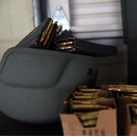Patterns of Arms Trade
The SIPRI report on the volume of international arms transfers during 2015-19 highlights the strengths of key strategic partnerships such as Russia-India, US-Japan and China-Pakistan, reinforced by arms trade.
- Kanica Rakhra
- March 25, 2020












